-
Wednesday, 7 October 2020 – 7pm
Session 1. The Dramatisation of Painting
Second session: Wednesday, 21 October – 7pm
With a presentation by: Guillermo G. Peydró
Luciano Emmer, Enrico Gras y Tatiana Grauding. Racconto da un affresco [History of a Fresco]
Italy, 1940, b/w, original version in Italian with Spanish subtitles, DA, 10'Alain Resnais. Van Gogh
France, 1948, b/w, original version in French with Spanish subtitles, DVD, 18'Raoul Servais. Papillons de nuit [Nocturnal Butterflies]
Belgium, 1998, colour, without dialogue, DA, 7'Andy Guérif. Maestà
France, 2015, colour, without dialogue, B-R, 60'The film Racconto da un affresco constituted a hugely significant event in the history of film realism, opening out the broad possibilities of the art documentary. Drawing from the grammar of fiction film, Emmer, Gras and Grauding used personages painting by Giotto in the Scrovegni Chapel, in Padua, as actors, a formula that would garner huge success, starting with Alain Resnais’ commission to make a documentary on Van Gogh “à la Emmer” — but with the addition of a narrator — a film that would win an Oscar. Different transformations can be discerned in films like Papillons de nuit and Maestà, which distort or invert the terms of initial experiment: the first with animation, created from paintings, the second with actors used as painted personages that resemble a tableau vivant.

-
Thursday, 8 October 2020 – 7pm
Session 2. From Experimental-Poetic Documentary to Film Essay
Second session: Thursday, 22 October – 7pm
With a presentation by: Guillermo G. Peydró
Henri Storck. Le monde de Paul Delvaux [The World of Paul Delvaux]
Belgium, 1944–1946, b/w, original version in French with Spanish subtitles, B-R, 11'Vera Jocić. Apel [Call]
Yugoslavia, 1964, b/w, original version in Serbian with Spanish subtitles, DA, 11'Juan José Gurrola. Alberto Gironella (from the series Artistic Creation)
Mexico, 1965, original version in Spanish, DA, 25'
Courtesy of: the UNAM Filmoteca, MexicoSerguéi Paradzhánov. Arabeskebi Pirosmanis temaze [Arabesque on the Theme of Pirosmani]
Soviet Union, 1985, b/w, original version in Georgian with Spanish subtitles, DA, 19'. Version restored in 2019Alain Resnais y Chris Marker. Les statues meurent aussi [Statues Also Die]
France, 1953, b/w, original version in French with Spanish subtitles, DVD, 30'In an open response to the Nazi notion of “degenerate art”, film-maker Henri Storck, a pioneer of Belgian documentary-making, made a short film in 1944 about the pictorial universe of Paul Delvaux with an alternative structure to customary dramatic, biographical and pedagogical narration. This form was taken on and developed by Resnais and Hessens in Guernica (1950) — also featuring an Éluard poem — and their poetic-experimental approach can be seen in films from other parts of the world, for instance the works included in this session: Vera Jocić’s Call, a meditation on the meaning of sculpture in the aftermath of Auschwitz; Alberto Gironella, in which Mexican film-maker Juan José Gurrola rethinks the iconography of Spanish painting; and Paradzhánov’s “Arabesque” journey through the world of artist Pirosmani. Film essays on art would be underpinned by the formal freedom of the movement, which emerged with the coming together of Marker and Resnais in Statues Also Die.
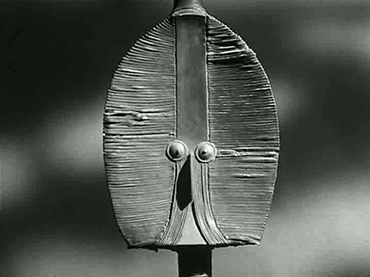
-
Friday, 9 October 2020 – 7pm
Session 3. The Audiovisual Analysis of Art
Second session: Friday, 23 October – 7pm
With a presentation by: Guillermo G. Peydró
Roberto Longhi and Umberto Barbaro. Carpaccio
Italy, 1948, b/w, original version in Italian with Spanish subtitles, DA, 15'
Point of origin: Fondazione di Studi di Storia dell´Arte Roberto LonghiHenri Storck and Paul Haesaerts. Rubens
Belgium, 1948, b/w, original version in French with Spanish subtitles, B-R, 60'Alain Jaubert. Duchamp. Le temps spirale (Duchamp. Spiral Time) [from the series Palettes]
France, 1993, colour, original version in French with Spanish subtitles, DVD, 30'In 1948, art historian Roberto Longhi and film-maker Umberto Barbaro theorised a specific wave of auteur informative documentary, believing that film production should be limited to framing the revealing detail that casts light on the painter’s style, but without breaching the aura of the works. Simultaneously, another option theorised by art critic and historian Carlo Ragghianti backed disassembling, right down to its final ramification, each work so as to expose its internal workings – a key example of this last trend is Rubens by Storck and Haesaerts, hailed at the time as “the triumphant entry of the History of Art in film” due to its capacity to audiovisually analyse art. This approach would culminate in the series Palettes, by Alain Jaubert, undertaken in 1988, which already possessed within its range of possibilities computer intervention on the image, and with eye-catching results.
![Alain Jaubert. Duchamp. Le temps spirale (Duchamp. Spiral Time) [from the series Palettes]. Film, 1993 Alain Jaubert. Duchamp. Le temps spirale (Duchamp. Spiral Time) [from the series Palettes]. Film, 1993](https://recursos.museoreinasofia.es/legacy_programs/3_6.gif)
-
Saturday, 10 October 2020 – 7pm
Session 4. The Critical Essay
Second session: Saturday, 24 October – 7pm
With a presentation by: Guillermo G. Peydró
Peter Greenaway. Rembrandt’s j’accuse (Rembrandt’s Accusation)
Holland, Germany, Finland, 2008, colour, original version in English with Spanish subtitles, DA, 116'Peter Greenaway conceived an audiovisual triptych devoted to Rembrandt’s The Night Watch. The three constituent pieces comprise a fiction biography, an experimental on-site installation, and this film essay on art, which uses every known discourse methodology from art history: from formalism to psychoanalysis; from sociology to iconology. The film-maker envisions a theory on the meaning of the painting — in alignment with the recurring obsessions in his filmography — and substantiates it with visual evidence in a master lecture that maximises its audiovisual possibilities.

-
Wednesday, 14 October 2020 – 7pm
Session 5. Procedural Film: Filming the Process of Creation, Before and After Le Mystère Picasso
Second session: Wednesday, 28 October – 7pm
With a presentation by: Guillermo G. Peydró
Hans Cürlis. Wassily Kandinsky in der Galerie Neumann-Nierendorf (Wassily Kandinsky in the Neumann-Nierendor Gallery) (from the series Schaffende Hände [Creative Hands])
Germany, 1926, b/w, without dialogue, DVD, 37''Alain Resnais. Visite à Oscar Dominguez (Visit to Óscar Domínguez)
France, 1947, b/w, without dialogue, DVD, 6'Paul Haesaerts. Bezoek aan Picasso (Visit to Picasso)
Belgium, 1950, b/w, original version in English with Spanish subtitles, DA, 20'Hans Namuth. Jackson Pollock 51
USA, 1951, colour, original version in English with Spanish subtitles, DA, 10'Albert Maysles, David Maysles, Deborah Dickson and Susan Froemke. Christo in Paris (Christ in Paris)
USA, 1990, colour, original version in English and French with Spanish subtitles, DA, 57'In 1915, Sacha Guitry filmed some of the only moving images we have of Rodin, Renoir and Monet, taking brief shots of their faces, which André Bazin called “animated photographs of famous figures”. A few years later, conversely, German film-maker Hans Cürlis brought about a key displacement: he changed the faces for hands, giving insight into how the works of Kandinsky and Grosz come into being on a blank canvas. This filmic awareness-raising would also gain richness: from the filming of hands to the use of slowing down and speeding up — with the latter visible in Visit to Óscar Domínguez by Alain Resnais; in Haesaerts’ influential transparent device in Visit to Picasso, re-explored with variations in Jackson Pollock 51 and Le Mystère Picasso, to the resources of live film to explore adjoining political negotiations in the act of creation, as evidenced in Christ in Paris.
![Hans Cürlis. Wassily Kandinsky in der Galerie Neumann-Nierendorf (Wassily Kandinsky in the Neumann-Nierendorf Gallery (from the series Schaffende Hände [Creative Hands]). Film, 1926 Hans Cürlis. Wassily Kandinsky in der Galerie Neumann-Nierendorf (Wassily Kandinsky in the Neumann-Nierendorf Gallery (from the series Schaffende Hände [Creative Hands]). Film, 1926](https://recursos.museoreinasofia.es/legacy_programs/5_5.gif)
-
Thursday, 15 October 2020 – 7pm
Session 6. The Poetic Essay
Second session: Thursday 29 October – 7pm
With a recorded presentation by: Claudio Pazienza
Claudio Pazienza. Tableau avec chutes (Painting with Falls)
Belgium, 1997, colour, original version in French with Spanish subtitles, DVD, 102'One of the zeniths of Belgian film on art, perhaps the freest and most creative film-making in this genre, is Painting with Falls, an unpredictable and striking filmic journey based on a painting — Landscape with the Fall of Icarus by Bruegel the Elder — which ultimately offers an unabridged human analysis of present-day Belgium. Equally, it constitutes a critical and political study of observation: the multiple gaze on the image and exactly what we decide to pay attention to or ignore about everything that passes before our eyes on a daily basis.
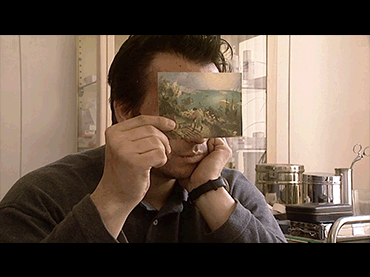
-
Friday, 16 October 2020 – 7pm
Session 7. The Essay Portrait I: Portrait of an Artist and Self-Portrait of a Film-maker
Second session: Friday, 30 October – 7pm
With a presentation by: Guillermo G. Peydró
Luc de Heusch. Magritte ou la leçon de choses (Magritte, or the Lesson of Things)
Belgium, 1960, colour, original version in French with Spanish subtitles, DVD, 13'André Delvaux. Met Dieric Bouts (With Dieric Bouts)
Belgium, 1975, colour, original version in French with Spanish subtitles, DA, 28'Alain Cavalier. Georges de la Tour
France, 1999, colour, original version in French with Spanish subtitles, DA, 26'Aleksandr Sokurov. Robert. Schastlivaya zhizn (Hubert Robert. A Fortunate Life)
Russia, 1996, colour, original version in French with Spanish subtitles, DVD, 26'The artist’s essay portrait goes beyond the documentary portrait with the film-maker’s intrusion in the work: the author reorders the pieces like a demiurge, in real time, sharing the doubts of the creative process with the viewer. The result: unique pieces are created, straddling portrait and self-portrait to reveal the literary, pictorial and photographic history of the genre. This session puts forward four artist’s portraits which are, in parallel, self-portraits of the film-maker: René Magritte for Luc de Heusch; Dieric Bouts for André Delvaux; Georges de La Tour for Alain Cavalier; and Hubert Robert for Aleksandr Sokurov.
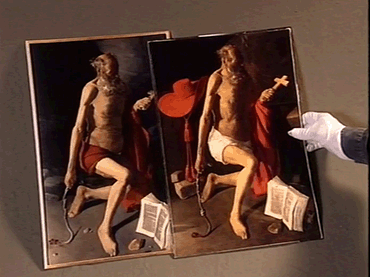
-
Saturday 17 October – 7pm
Session 8. The Essay Portrait II: The Feminist Survey
Second session: Saturday 31 October – 7pm
Agnès Varda. Jane B. par Agnès V. [Jane B. for Agnès V.]
France, 1987, colour, original version in French with Spanish subtitles, DA, 94'In this film, Varda creates an essay portrait of Jane Birkin, considering, simultaneously, the distance between painting and film, between the male and female gaze. Balancing the power game that is implicit in the artist-model relationship, Varda creates an unusual space inside art history’s power relationships: whoever looks and gives orders allows the model/muse to return the gaze and discuss with the artist (in this case film-maker and woman) the conditions and implication of her pictorial representation. Actress, singer and model Jane Birkin is, like Varda, a militant feminist who embodies every contradiction in the contemporary world with regard to the cultural treatment of women. Rarely has the portrait been worked upon with such awareness as in this film.
![Agnès Varda. Jane B. par Agnès V. [Jane B. for Agnès V.]. Film, 1987 Agnès Varda. Jane B. par Agnès V. [Jane B. for Agnès V.]. Film, 1987](https://recursos.museoreinasofia.es/legacy_programs/8_4.gif)
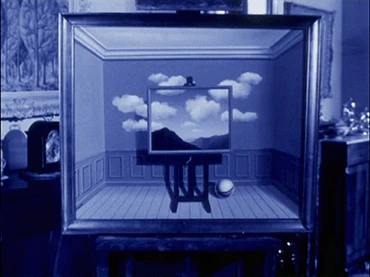
Held on 07, 08, 09, 10, 14, 15, 16, 17, 21, 22, 23, 24, 28, 29, 30, 31 oct 2020
The Museo Reina Sofía devotes a month of its audiovisual programme to the history of film on art, organising a series that pivots on a set of formal lines stretching back to the 1920s. Although filming the arts goes back a long way, it would start to take shape in its own space from the aforementioned decade onwards, primarily in France, Belgium and Italy, with its outgrowth and debates still running today.
The end of the Second World War brought with it the consolidation of a specific free-standing genre, and its internal debates, controversies and the offshoots of different conflicting formal proposals — and a terrain par excellence that is non-fiction. In the mid-1940s, UNESCO believed film on art could be a key instrument for the cultural and political reconstruction of a decimated Europe, in a period which witnessed the proliferation of international encounters between artists, film-makers, composers, art historians and writers. Together these figures contemplated, in the context of the Universal Declaration of Human Rights, what filming the arts could mean and which specific characteristics of shooting, editing and script-writing a film of this kind must possess. The implications of the decisions that followed this theoretical and practical ebullience have reached the present day via films that either develop or question those pioneering experiments, flowing out into essays, web-docs and installations. To survey this century-old line of experimentation in its different formal and conceptual options is the objective of this series.
With a history that remains largely obscure, and limited in its widespread perception to TV documentaries and a few isolated and decontextualised examples — Le Mystère Picasso Henri-Georges Clouzot (1956) being one — film about art is, nevertheless, one of the most fertile creative periods in the history of cinema. With good reason, it has been undertaken by some of the twentieth-century’s pre-eminent film-makers, such as Robert Flaherty, Carl Theodor Dreyer, Michelangelo Antonioni and Agnès Varda, and supported vehemently by some of the most relevant art and film theorists since the 1930s, for instance Pierre Francastel, Siegfried Kracauer and André Bazin. The aesthetic and political importance of film on art, its role in the reinvention of the documentary genre, on one side, and the cultural reconstruction of Europe opposite fascism and in the aftermath of the Second World War, on the other, was quickly foregrounded by figures such as Italian art historian and critic Giulio Carlo Argan, who in 1948 declared:
If the purpose of the art critic is to understand an artwork of the past with the appreciation of a modern man, then the films on art are, in fact, art criticism; and if, as I believe, the art critic has a social purpose, then it can certainly be said that, from a social point of view, films on art are the most alive and effective system of criticism.
In essence, it is an autonomous creative field which stands alone both from films made by artists and purely experimental works with a focus on essays of perception and concerns related to light and colour. It also possesses its own critical literary tradition, which is internationally demarcated in being dubbed film sur l'art, or film on art: films created by film-makers with a background in documentary or fiction who explore how to use the expressive tools of the medium to translate the visual arts into film. They share a clear idea of conceiving films that are not mere reproductions of the source films, but, rather, reveal their essence through another artistic medium. As critic and theorist André Bazin defined it: “A new aesthetic being, born from the conjunction of painting and film”.
Therefore, this programme plots out the cartography of different trends in the field across the breadth of a century, eschewing more mainstream and less revealing examples from fiction film and underscoring the relentless experimentation produced from non-fiction. Each session will start from one of these pioneering experiments to then show a series of films that modify, from a range of forms, this initial idea, thereby looking to shed light on the degree of complexity in each genre, even current ones, which are able to broaden the meanings of art from the film medium.
Comisariado
Guillermo G. Peydró
Línea-fuerza
Repensar el museo
Itinerancies
Barcelona, España
18 November, 2020 - 19 November, 2020
Más actividades
![Metahaven, The Sprawl: Propaganda about Propaganda [La diseminación: propaganda sobre propaganda], 2015, película](https://recursos.museoreinasofia.es/styles/small_landscape/public/Actividades/interfaz_emotiva_0.jpeg.webp)
EMOTIVE INTERFACE. The Films of Metahaven
Thursday, 27, Friday, 28, and Saturday, 29 November 2025 – check times
The Museo Reina Sofía and the Márgenes International Film Festival in Madrid, here in its fifteenth edition, present this series devoted to the artist collective Metahaven. The programme is framed inside the working strand both institutions started in 2024, focusing on an exploration of contemporary audiovisual narratives, a hybridisation of languages and the moving image as a tool for practising critical gazes on the present. Emotive Interface. The Films of Metahaven comprises two sessions of screenings and a masterclass delivered by the collective, centring on the relationship between the internet, technology, time and the moving image. All sessions will be presented by the artists.
The work of Metahaven — Dutch artist duo Vinca Kruk and Daniel Van der Velden — encompasses graphic art, video, installations, writing and design around urgent issues related to governance, identity, power and transparency in the digital age. Thus, their practice stands at the crossroads of art, film and critical thought, as they employ visual language as a tool to explore the tensions between technology, politics and perception, their practice combining the rigour of the visual essay and a strong poetic component, where graphic design, digital animation and documentary material fuse into dense, emotionally ambiguous compositions that speak of post-digital romanticism through an allegorical formulation. The spotlight of this series shines brightly on some of Metahaven’s recent works, for instance The Feeling Sonnets (Transitional Object) (2024), in which they examine language, poetry and digital time, and on The Sprawl (Propaganda About Propaganda) (2015), an essay which explores how the internet and social media have radically altered the relationship between truth, power and perception. Finally, the duo’s masterclass is set forth here as a survey of the main themes explored by both artists.
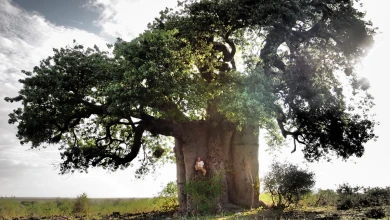
Francisco López and Barbara Ellison
Thursday, 11 December - 8pm
The third session in the series brings together two international reference points in sound art in one evening — two independent performances which converse through their proximity here. Barbara Ellison opens proceedings with a piece centred on the perceptively ambiguous and the ghostly, where voices, sounds and materials become spectral manifestations.
This is followed by Francisco López, an internationally renowned Spanish sound artist, who presents one of his radical immersions in deep listening, with his work an invitation to submerge oneself in sound matter as a transformative experience.
This double session sets forth an encounter between two artists who, from different perspectives, share the same search: to open ears to territories where sound becomes a poetic force and space of resistance.
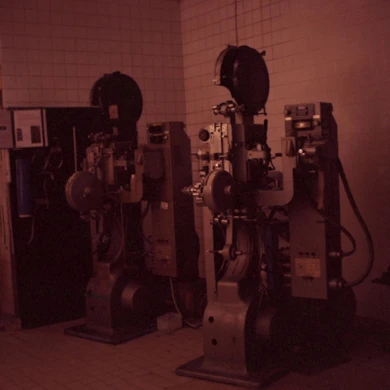
Long Live L’Abo! Celluloid and Activism
4, 5, 6 DIC 2025
L’Abominable is a collective film laboratory founded in La Courneuve (Paris, France) in 1996. It came into being in response to the disappearing infrastructures in artisan film-making and to provide artists and film-makers with a self-managed space from which to produce, develop and screen films in analogue formats such as Super 8, 16mm and 35mm. Anchored in this premise, the community promotes aesthetic and political experimentation in analogue film opposite digital hegemony. Over the years, L’Abominable, better known as L’Abo, has accompanied different generations of film-makers, upholding an international movement of independent film practices.
This third segment is structured in three sessions: a lecture on L’Abo given by Pilar Monsell and Camilo Restrepo; a session of short films in 16mm produced in L’Abo; and the feature-length film Une isle, une nuit, made by the Les Pirates des Lentillères collective.
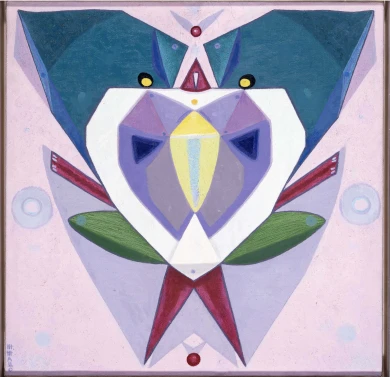
Estrella de Diego Lecture. Holding Your Brain While You Sleep
Wednesday, 3 December 2025 – 7pm
Framed inside the Museo Reina Sofía’s retrospective exhibition devoted to Maruja Mallo, this lecture delivered by Estrella de Diego draws attention to the impact of the artist’s return to Spain after her three-decade exile in Latin America.
Committed to values of progress and renewal in the Second Republic, Mallo was forced into exile to Argentina with the outbreak of the Civil War and would not go back to Spain to settle definitively until 1965 — a return that was, ultimately, a second exile.
Mallo saw out her prolific artistic trajectory with two impactful series: Moradores del vacío (Dwellers of the Void, 1968–1980) and Viajeros del éter (Ether Travelers, 1982), entering her most esoteric period in which she drew inspiration from her “levitational experiences” of crossing the Andes and sailing the Pacific. Her travels, both real and imaginary, became encounters with superhuman dimensions.
In parallel, her public persona gained traction as she became a popular figure and a key representative of the Generation of ‘27 — the other members of which also started returning to Spain.
This lecture is part of the Art and Exile series, which seeks to explore in greater depth one of the defining aspects of Maruja Mallo’s life and work: her experience of exile. An experience which for Mallo was twofold: the time she spent in the Americas and her complex return to Spain.
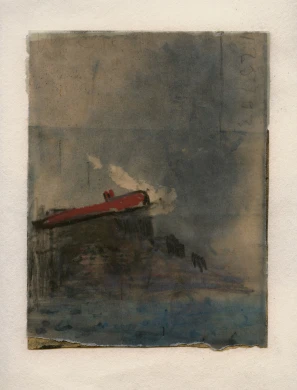
Juan Uslé. That Ship on the Mountain
Tuesday, 25 November 2025 – 7pm
Ángel Calvo Ulloa, curator of the exhibition Juan Uslé. That Ship on the Mountain, engages in conversation with artist Juan Uslé (Santander, 1954) in the Museo’s Auditorium 400 to explore in greater depth the exhibition discourse of this anthological show spanning four decades of Uslé’s artistic career.
The show casts light on the close relationship Uslé’s work bears to his life experiences, establishing connections between different stages and series which could ostensibly seem distant. Framed in this context, the conversation looks to explore the artist’s personal and professional journey: his memories, experiences of New York, his creative process, conception of painting, and ties with photography and film, and the cohesiveness and versatility that characterise his art. Key aspects for a more in-depth understanding of his artistic sphere.
The conversation, moreover, spotlights the preparatory research process that has given rise to this exhibition to grant a better understanding of the curatorial criteria and decisions that have guided its development.
These inaugural conversations, part of the main working strands of the Museo’s Public Programmes Area, aim to explore in greater depth the exhibition narratives of the shows organised by the Museo from the perspective of artists, curators and specialists.



![Miguel Brieva, ilustración de la novela infantil Manuela y los Cakirukos (Reservoir Books, 2022) [izquierda] y Cibeles no conduzcas, 2023 [derecha]. Cortesía del artista](https://recursos.museoreinasofia.es/styles/small_landscape/public/Actividades/ecologias_del_deseo_utopico.jpg.webp)
![Ángel Alonso, Charbon [Carbón], 1964. Museo Reina Sofía](https://recursos.museoreinasofia.es/styles/small_landscape/public/Actividades/perspectivas_ecoambientales.jpg.webp)